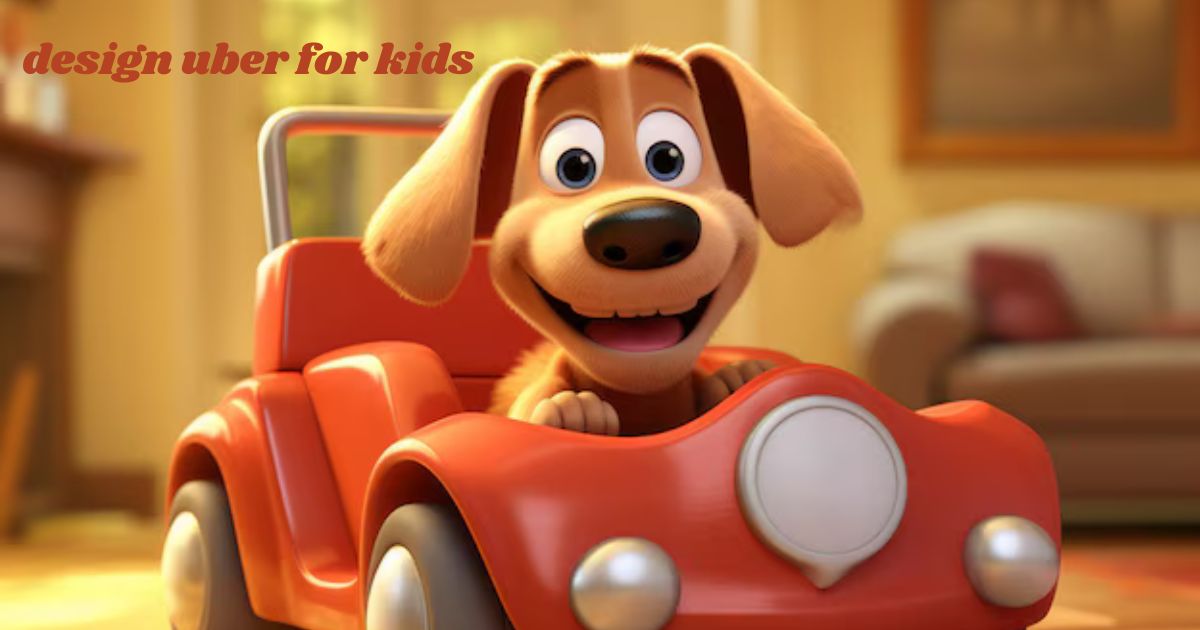In recent years, the ride-hailing industry has undergone massive growth, with services like Uber and Lyft becoming household names. However, while these platforms have revolutionized transportation for adults, they pose significant challenges for families with young children. Parents seek reliable, safe, and specialized services to transport their children, especially when they are unable to accompany them. This demand has sparked the concept of design uber for kids, a ride-sharing service designed specifically for transporting children. This article explores the critical aspects of designing such a service, including safety protocols, features, technology, and user experience, while also addressing the potential challenges and opportunities that come with developing a child-focused ride-hailing service.
Key Considerations for Designing Uber for Kids
Safety First & Parental Control Features
Safety is the most critical factor when it comes to designing a ride-hailing service for kids. Traditional design uber for kids services may not provide the necessary safety measures parents need. In designing a service for kids, features such as background-checked drivers, vehicle safety certifications, and child-lock systems are essential. For an Uber for Kids service to succeed, parents must have control over the entire experience. This could include real-time GPS tracking, the ability to communicate with the driver, ride confirmations, and notifications at each stage of the trip. Parents should be able to pre-screen and select drivers based on their preferences, such as drivers with experience working with children.
Driver Vetting and Training & User-Friendly Interface
Drivers working for a kids-focused ride service must undergo a more rigorous vetting process. Beyond standard background checks, drivers should be trained to handle the specific needs of children, including proper car seat installation, first aid, and understanding child psychology to manage different behaviors. The app’s design must cater to both parents and children, making it easy to navigate while ensuring security. The interface should also be kid-friendly, with visual cues, simple language, and customization options for a personalized experience.
Child-Specific Needs & Insurance and Liability
Vehicles should be equipped to handle children of all ages. This means offering car seats or booster seats for younger kids and ensuring that the interior is comfortable and kid-friendly. The service should also include flexible ride options for families with multiple children, allowing parents to schedule group pickups or drop-offs for activities like playdates and school trips. Parents need peace of mind knowing that their children are safe in the event of an accident or emergency. The ride-hailing service should offer comprehensive insurance coverage for both the driver and the passenger (child).
Legal and Regulatory Challenges & Customer Trust and Branding
Operating a ride-sharing service for kids may involve navigating strict local and national laws. Licensing requirements, regulations around transporting minors, and compliance with child safety laws are all hurdles that must be addressed when developing this type of platform. Since this service targets parents, branding must emphasize trust, security, and care. The name, logo, and overall design must invoke feelings of safety, reliability, and convenience. Building trust through transparent communication, regular updates, and impeccable customer service is key.
Conclusion
Design uber for kids like service for kids involves unique challenges but holds immense potential for addressing a growing demand among families. By prioritizing safety, parental control, driver vetting, and legal compliance, developers can create a successful, trusted platform that offers both convenience and peace of mind for parents.
FAQs
What are the key safety measures for an Uber for Kids service?
A comprehensive safety protocol includes background checks for drivers, vehicle safety checks, child-lock systems, GPS tracking, and real-time updates for parents. Drivers should also be trained in child psychology, first aid, and proper car seat usage.
How can parents ensure their child’s safety during a ride?
Parents can monitor their child’s ride via real-time GPS tracking, receive notifications at every step of the trip, and communicate directly with the driver. Choosing a driver who has experience working with children further enhances safety.
What additional training do drivers require for Uber for Kids? They should also undergo psychological assessments to ensure they can manage children’s varying behaviors.
Can multiple children share a ride in this service?
Yes, Parents can schedule pickups and drop-offs for several kids, ensuring efficient transportation for busy families.
How does insurance work for Uber for Kids?
The service should provide comprehensive insurance that covers both the driver and the child passenger. This includes liability coverage in the case of accidents or other incidents during the ride.
Are there any legal challenges in running a ride-sharing service for kids?
Yes, regulatory issues like child transportation laws, licensing requirements, and liability concerns are key challenges. Companies will need to work closely with legal teams to ensure compliance with local, state, and national regulations regarding child safety.
What is the target demographic for an Uber for Kids service?
The primary users of this service are families with young children, particularly those with busy schedules requiring assistance with school pickups, extracurricular activities, or other transportation needs.











